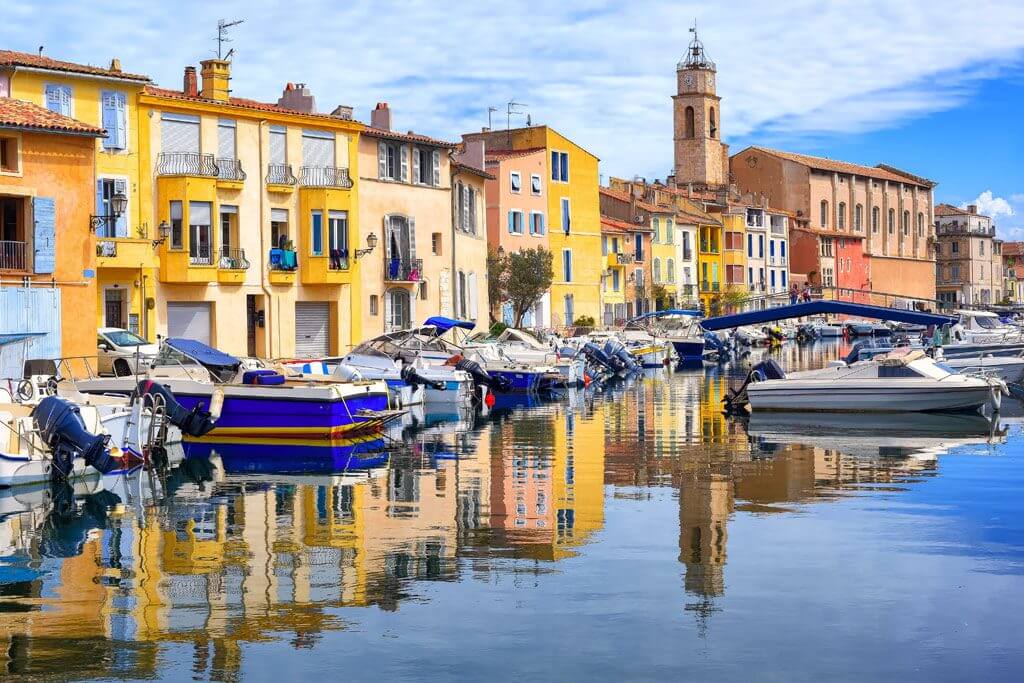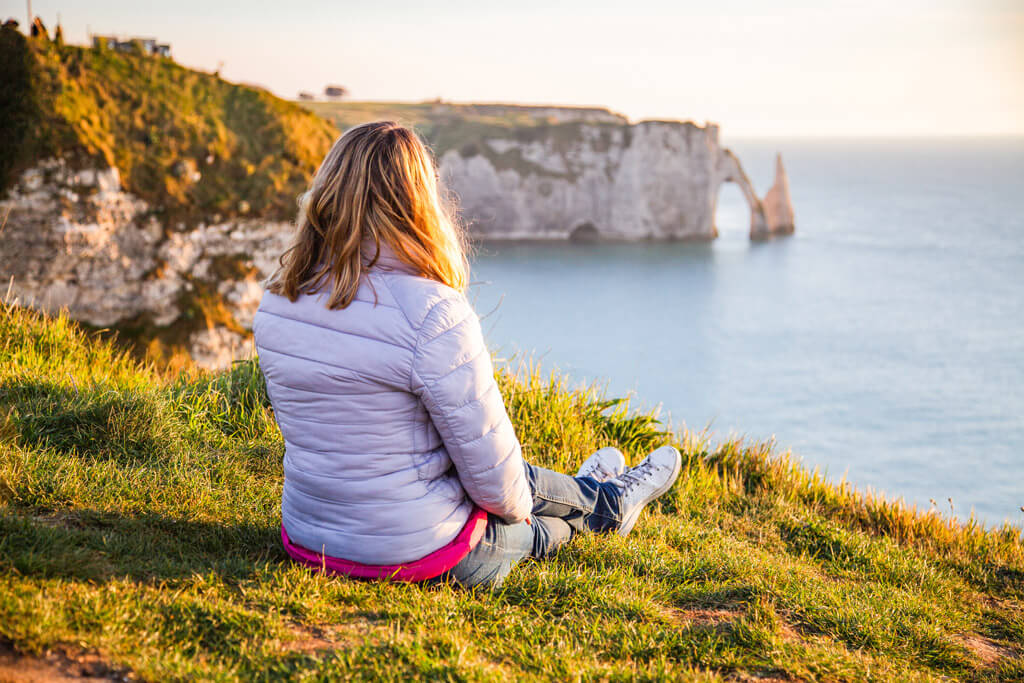Article written by Elisa - Travel Writer & Local in France
This article may contain compensated links. Please read disclaimer for more info.
Normandy (Normandie in French) is a French Region located in Northern France, bordered by La Manche (the English Channel) and facing the United Kingdom. Normandy offers visitors a stunning coastline, picturesque harbors, and elegant seaside resorts.
Normandy’s countryside is also lovely to visit, dotted with châteaux, manors, picturesque villages, and the delightful reliefs of Norman Switzerland.
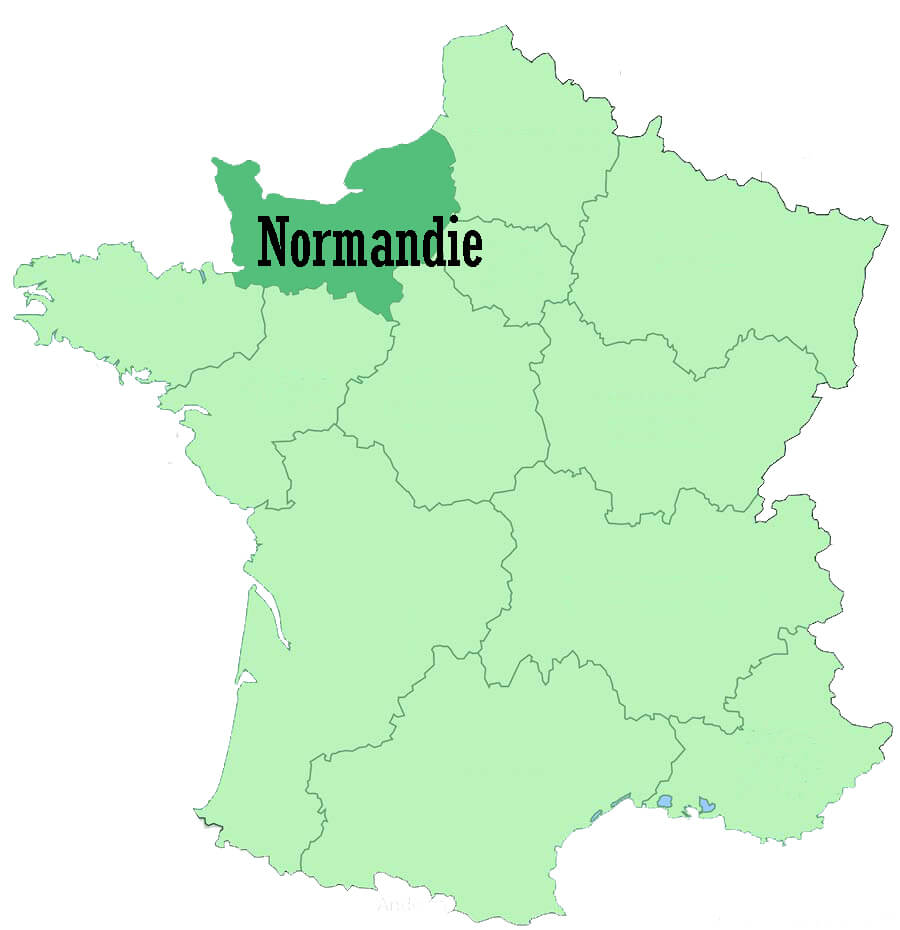
Normandy is also the land of Impressionism, a movement inspired by Monet’s ‘impression’ of the sunrise at Le Havre.
History lovers will be fascinated by Normandy’s history, exploring the D-Day Landing Sites, the medieval streets and cathedral of Rouen, and Mont Saint-Michel, the wonder of the western world. Normandy is also the land of King Richard the Lionheart, William the Conqueror, or Jeanne d’Arc.
Normandy is divided into five departments: Calvados (14), Eure (27), Manche (50), Orne (61), and Seine-Maritime (76). The main cities in Normandy are Le Havre, Caen, and Rouen. There are so many things to do in Normandy that you cannot miss this wonderful region when visiting France!
Related posts
Normandy Travel
BY FERRY: Normandy is well connected with the UK and Ireland through the ports of Cherbourg, Le Havre, Caen, and Dieppe.
BY TRAIN: Traveling in France by train is straightforward. Four national train lines serve Normandy. Three lines connect Normandy to Paris, and there’s a fourth one that connects Caen to Tours:
- Paris – Rouen – Le Havre;
- Paris – Caen – Cherbourg;
- Paris – Argentan – Granville;
- Caen – Alençon – Le Mans – Tours.
You can explore many other places in Normandy by regional trains (TER Normandy).
Normandy by Car
For extended trips in the region of Normandy, the best way to get around is by car. This region is a great place for memorable French road trips. With a car, some good tunes, and the best company, you are set for one of the best adventures in your life. Driving in France is very easy, and with the car, you can go off the beaten path to visit the best of Normandy.
Recommended road trips in Normandy:
If you don’t have your car, we recommend booking in advance through platforms like RentalCar. This site takes all of the major rental companies, such as Hertz, Avis, etc., and compares prices for you. Check out our best tips for renting a car in France.
Best Places to Visit in Normandy
Where to go in Normandy? Let’s have a look at the best places to visit in Normandy. The list of best things to do in Normandy, France, includes sightseeing, sea towns, lots of architecture, history, and gastronomy.
1. Mont Saint-Michel
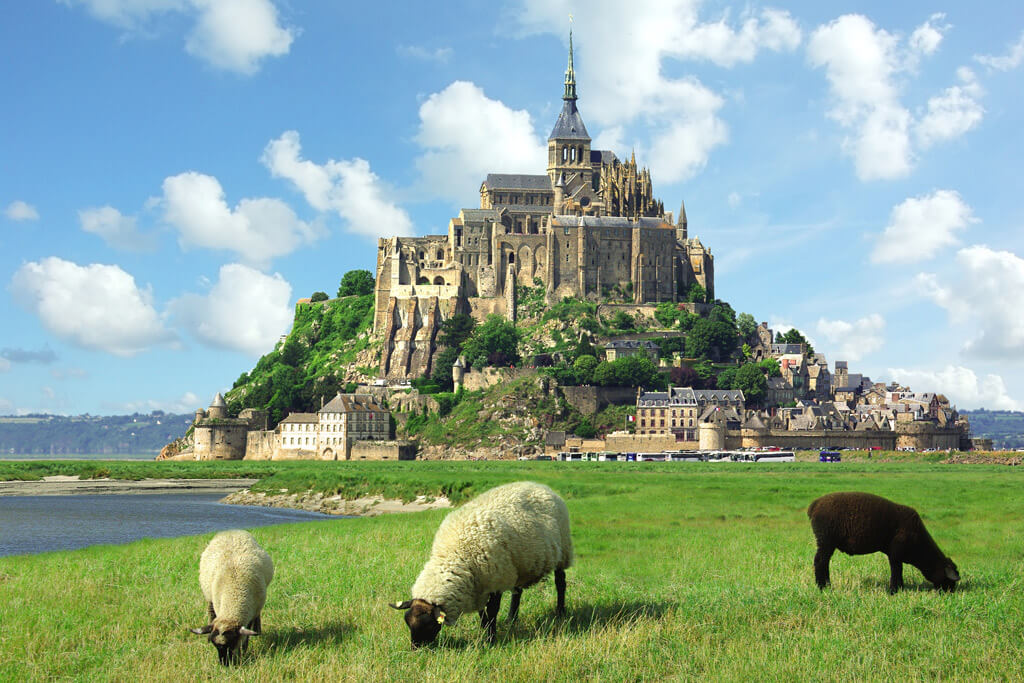
Be moved by the Mont Saint-Michel, Wonder of the Western World. This amazing Benedictine Abbey is one of the main attractions in Normandy. If you can spend only one day in Normandy, then choose to visit Mont Saint-Michel – Click here to buy your tickets.
Mont Saint-Michel is located on a rocky island at the Couesnon River’s mouth, where Normandy and the Brittany region meet. The area is known for its high tides, making the Abbey inaccessible for some hours.
The first structures of this religious site were built in the 10th century. Since then, magnificent monastic buildings were added through medieval times. The spectacular Gothic architecture that we can see today is from Norman times thanks to the ducal patronage.
The Abbey dedicated to Saint-Michel became in Medieval times a renowned center of pilgrimage and learning, attracting some of the greatest minds and manuscript illuminators in Europe. Mont Saint-Michel also had great strategic value and was almost impregnable, never succumbing to British attacks in the Hundred Years’ War.
DID YOU KNOW? Mont Saint-Michel is one of the most popular day trips out of Paris. Visit the Abbey at your own pace or with an audio guide with this top-rated tour to Mont Saint-Michel from Paris, with transportation included.
For a memorable experience, however, spend one night on-site in one of the hotels in Mont Saint-Michel. Wander around the medieval streets when the crowds are gone and watch the waters rise to inundate the entrance to the island.
2. Côte d’Albâtre (The Alabaster Coast)
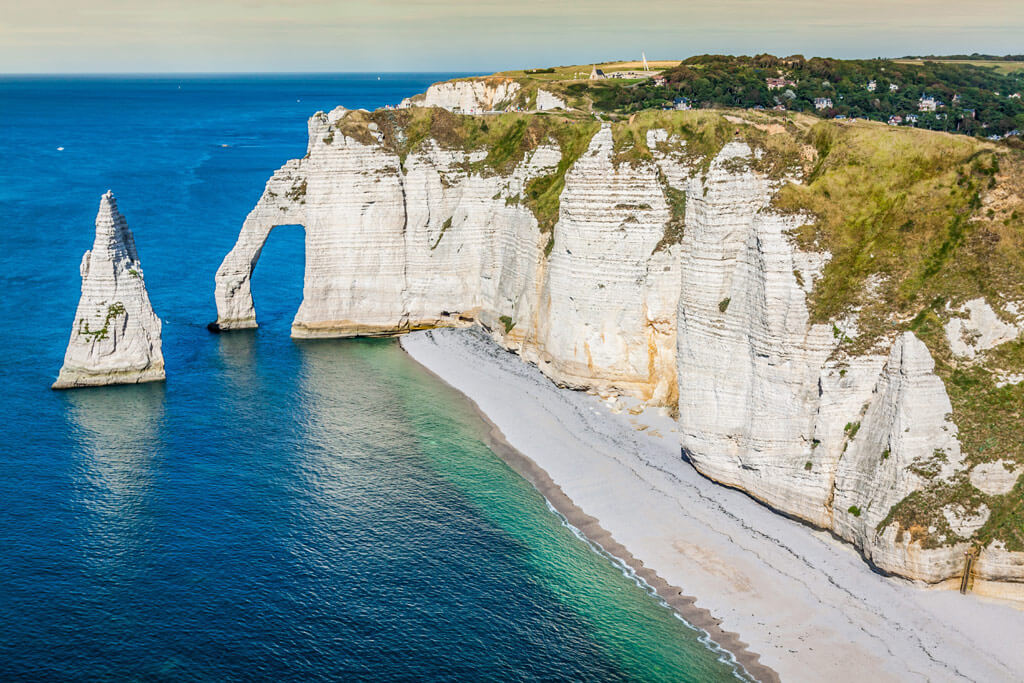
From Dieppe to Étretat, the Alabaster Coast is a land of majestic cliffs, extraordinary valleuses (natural depressions in the cliffs), beaches, and picturesque fishing villages.
Enjoy amazing landscapes bathed by the changing light; this is the land of Impressionists! Painters like Monet, Turner, Courbet, Pissarro, and Renoir put their easel outdoors in this land to capture its beauty.
Stimulated by the beauty of this Norman setting, Monet painted more than 100 pictures along this coast between Dieppe and Varengeville. Then, he fell in love with the cliffs at Etretat, which he captured in some of his masterworks. With its extraordinary rock formations, this picturesque seaside town also captured Eugène Boudin and Gustave Courbet’s attention, who painted more than fifty views of its coastline and sea.
TIP: If you are looking for a romantic getaway in Normandy, book your stay in one of these wonderful hotels in Étretat.
3. Jumièges Abbey
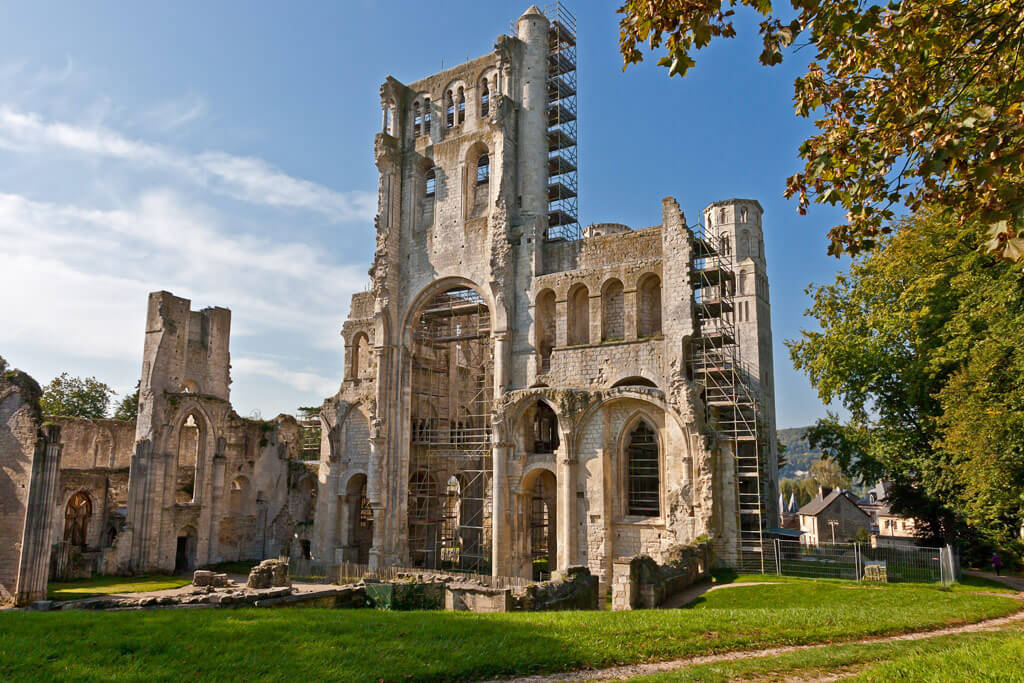
Jumièges Abbey is one of the best things to see in Normandy for history lovers. The abbey was founded in the 7th century, and it was one of the most important Benedictine monasteries in Normandy and France.
The first building was destroyed during the Viking invasions in the 9th century. As these Norsemen settled in Normandy and turned to Christianity, one of their early leaders, William Longsword, reinstituted a monastery from the mid 10th century.
In 1040, construction began on the vast Abbey – often described as the first major Romanesque building in northern France -, and it was consecrated in 1067 with the assistance of William the Conqueror. In the 13th century, when Jumièges was at the height of its power, the abbey church was given a Gothic choir.
Jumièges established itself as a great center of medieval learning. Although the Abbey was a wealthy institution, it was renowned for its care for the poor.
From the 16th century and due to the French Wars of Religion, Jumièges went into rapid decline. The monks ran from fanatical Protestants who looted the place, wreaking devastation. After a small-scale revival, the Abbey was badly damaged during the Revolution, and it became a stone quarry for a time before it became state property. The ruins that remain to this day recall the greatness of the Abbey.
THE ABBEY ROUTE. Jumièges Abbey is part of a string of Norman religious buildings along the Seine, between Rouen and Le Havre. You can find more information on the Seine Abbey Route here.
4. Honfleur
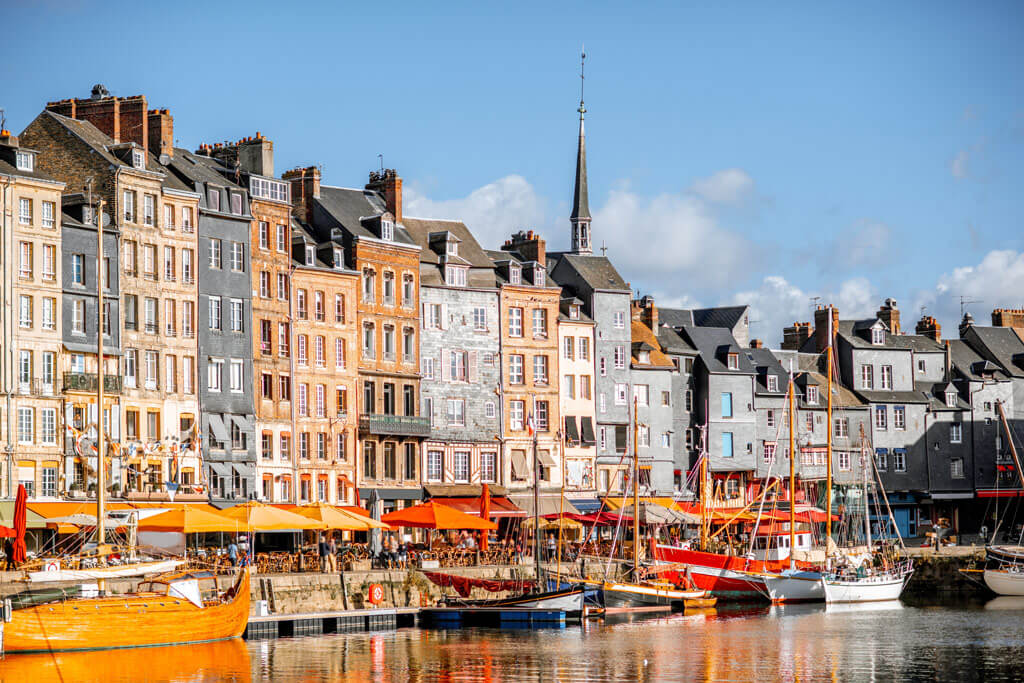
Honfleur is one of the most beautiful coastal towns in France and one of the best places in Normandy. Located in the department of Calvados, on the Seine’s estuary, this old Norman port-city of more than 1,000 years is today a place full of charm and the perfect base camp to explore the Pays d’Auge and the Côte Fleurie in Normandy.
Honfleur was essentially built for commerce. During the Ancien Régime, Honfleur’s shipowners made fortunes from trade, notably with North America. Samuel de Champlain, one of the most famous explorers associated with Honfleur, sailed from this port to found Quebec (Canada).
Honfleur offers visitors a rich historical and artistic past. Beyond the picture-perfect Old Bassin, with its old and charming facades, there are also alleys with old, picturesque houses, the splendid wooden church of Sainte-Catherine, two salt granaries from the 17th century, and much more.
Click here to book your stay in Honfleur
5. The D-Day Landing Sites
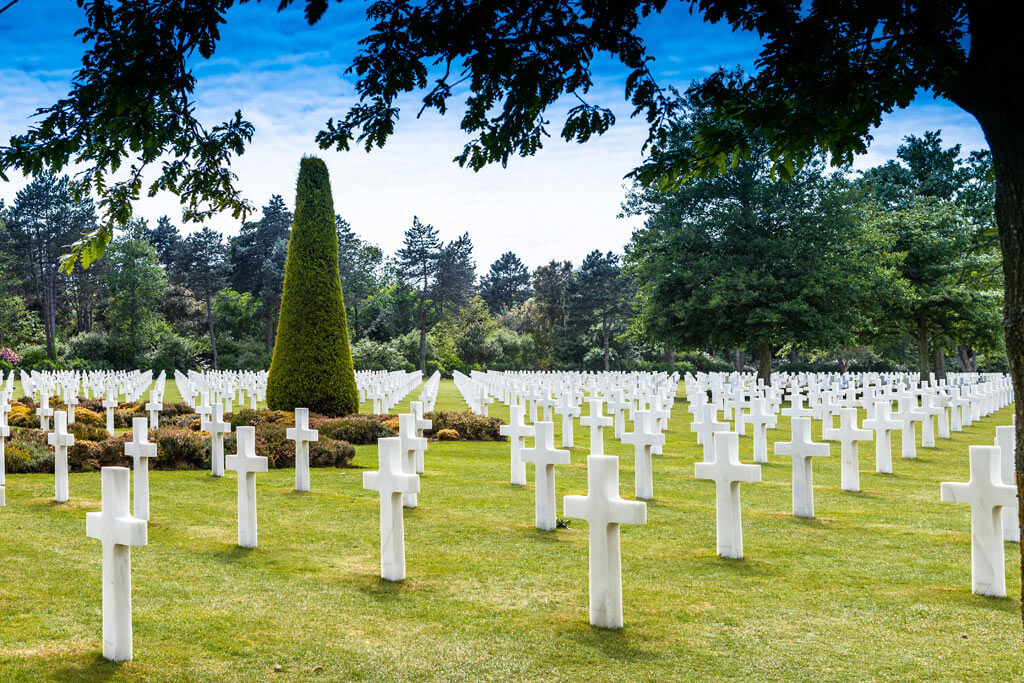
People visiting Normandy can still see many of the historical WW2 sites related to the D-day in Normandy on a day trip or, even better, on a Normandy road trip. The trip to visit the WW2 sites in Normandy can be emotionally exhausting, but it is essential to keep this chapter of our history alive in our memories, so it will never be repeated.
The Normandy Landing operation was the largest seaborne invasion in history. The invasion took place on Normandy’s beaches on Tuesday, 6 June 1944, by the Allies. The operation, known as D-Day, was the beginning of the liberation of German-occupied France (and later Europe) from Nazi control and laid the Allied victory foundations on the Western Front.
The road trip to explore the D-day Landing sites is one of our favorite road trips in France. You can also visit some of these sites on a (long) day trip from Paris. The best D-Day Landing Sites road trip itinerary includes the D-Day Landing Beaches (Omaha, Utah, Sword Gold, and Juno Beach), picturesque towns, and some war cemeteries and memorials.
TIP: Everybody loves this Normandy Tour of D-Day Landing Beaches starting from Paris!
6. Château Gaillard and Les Andelys
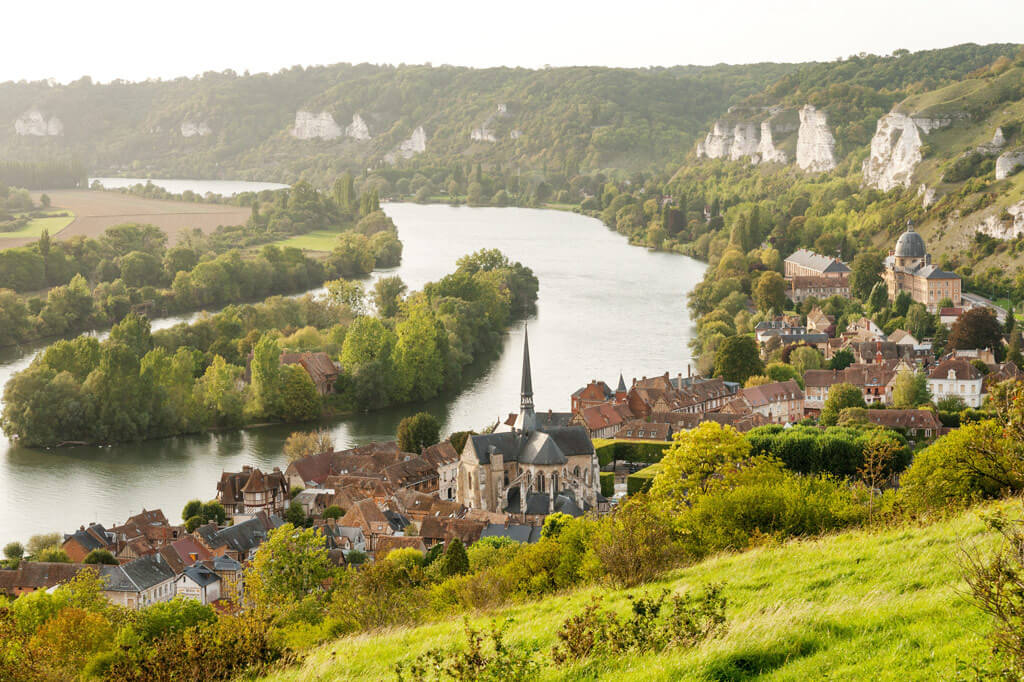
Les Andelys is a picturesque town located in one of the most beautiful sites in the Seine Valley, nestled between the river and a high cliff. The town has different religious buildings from the 13th century and beautiful family houses from the 16th to 19th centuries.
Les Andelys is a great stop on your way to Rouen or Giverny. It is surveyed by the splendid ruins of Château-Gaillard, a medieval fortress built in the 12th century by King Richard the Lionheart (who was also Duke of Normandy) to protect his lands against the French King Philippe Auguste.
Early in 1314, Château Gaillard became the prison of Queen Margaret of France. The French Queen was allegedly caught in the act of adultery in the Tour de Nesle Affair, and she was imprisoned for the last two years of her life, along with her sister-in-law Blanche of Burgundy in this château where she died.
Today, the castle is in ruins, but despite this, there’s a lot to see, including most of the keep and inner bailey and large parts of the outer walls. The view from the castle, over Les Andelys and the Seine’s meanders, is terrific.
7. Medieval City of Rouen
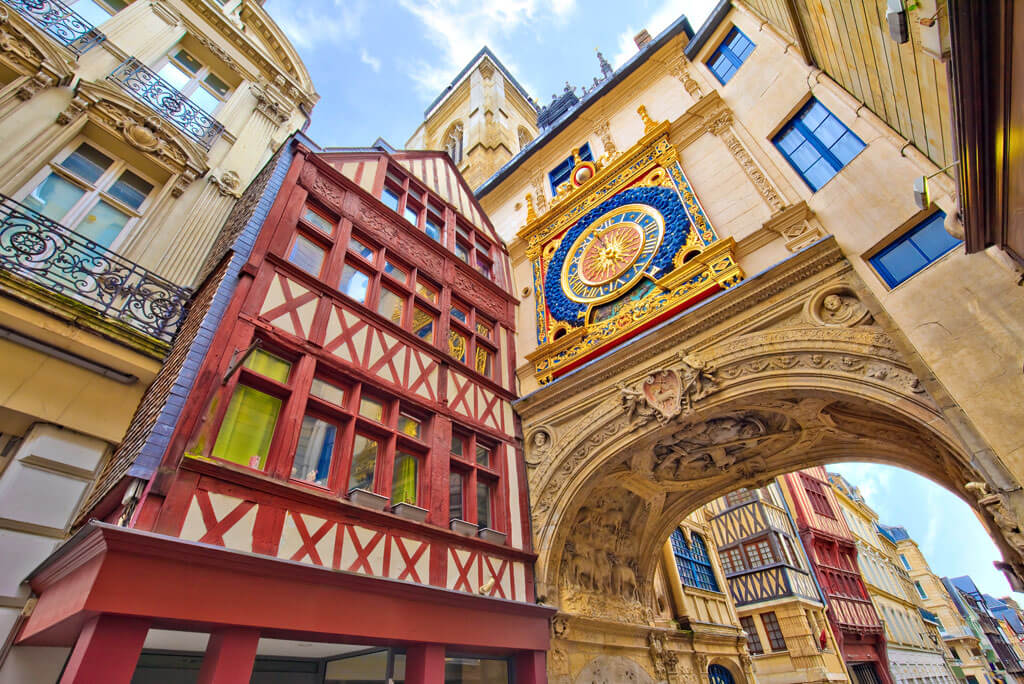
Rouen is one of the two capitals of the Region of Normandy. Because of its numerous churches, abbeys, and other religious buildings, Rouen is nicknamed the ‘city of a hundred bell towers.’ Rouen was the capital of the Duchy of Normandy from 911 to 1204.
Since the 13th century, this city bisected by the Seine River has undergone remarkable economic expansion thanks, in particular, to maritime and river trade.
Disputed by the French and the English throughout the Hundred Years War, it was here that the English imprisoned Joan of Arc and burned her alive on 30 May 1431.
Apart from its rich past, Rouen has an incredible and well-kept medieval heritage. Its cathedral, world-famous thanks to Monet, is one of the highest in the world. The city also has many well-known museums, such as the Museum of Fine Arts, the museum Secq des Tournelles, and the National Museum of Education.
The city can easily be reached by direct train from Paris, and it is a popular day-trip destination for people who want to see other than the French capital. However, we recommend spending at least one night on-site to get the most out of this interesting city.
Click here to book your stay in Rouen
8. The Cider Route
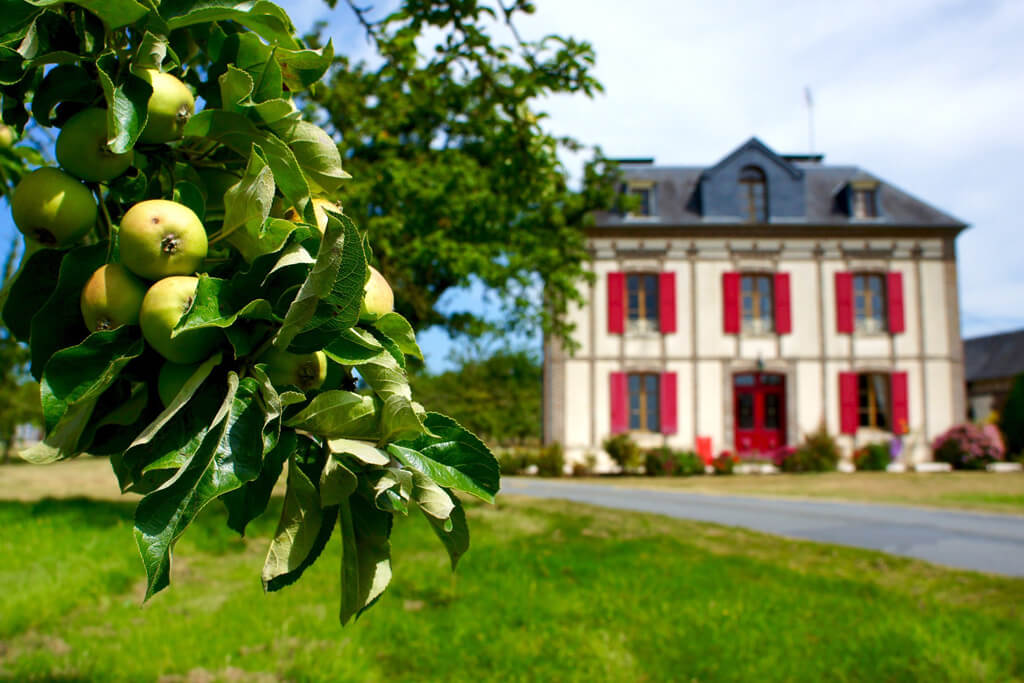
In addition to the numerous sites and things to see in Normandy, the region proposes many interesting circuits, often related to Normandy’s gourmet treasures.
In Normandy, apples abound, and the region produces some famous French drinks based on apples, like cider, Pommeau, or the apple liquor called Calvados.
If you are wondering what to do in Normandy to know more about these drinks, the Cider Trail is worth considering. The Cider Trail is a well-marked 40km tourist circuit through the region of Pays d’Auge in Lower Normandy. The Pays d’Auge is popular for its typical Normandy villages, stud farms, and apple orchards. Some of the orchards are more than 200 years old! Today, Calvados, Cider, and Pommeau are the main products of these orchards.
Get ready to unfold the journey of apples from farms to the table. Some twenty cider producers and distillers of ‘Cambremer Vintage’ Calvados open their cellars and pressing sheds to visitors and encourage them to taste their products along this circuit.
9. Caen
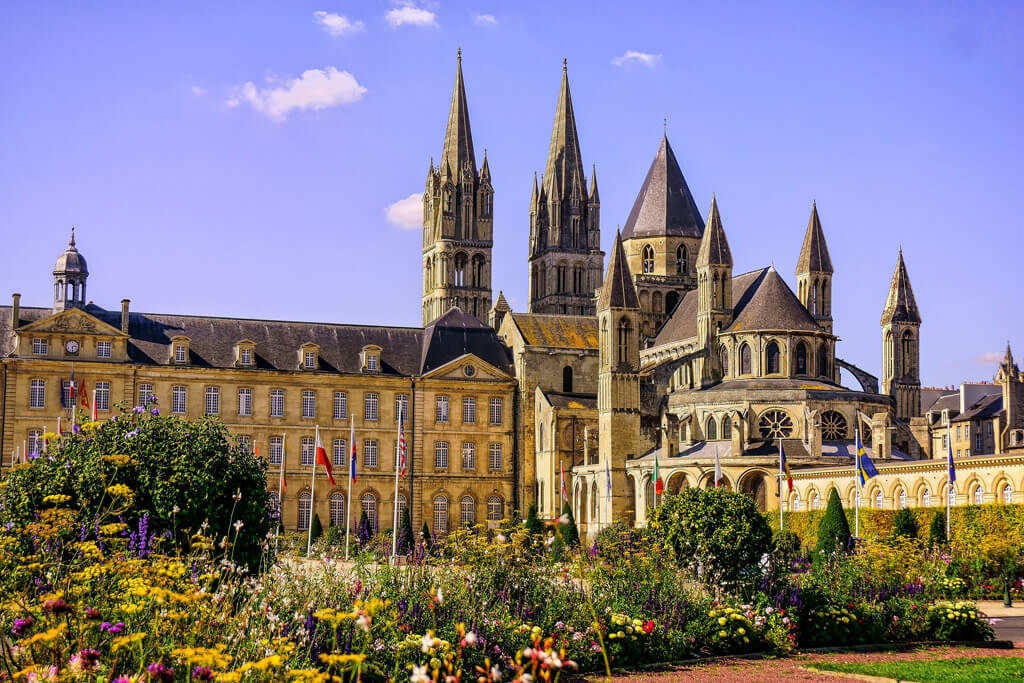
Caen is one of the best cities in Normandy. It is a city with a vibrant history and an attractive place to visit, with plenty of museums, shops, restaurants, gardens, plus the liveliness of a university town. Its strategic position, well connected with Paris and Portsmouth in the UK, makes Caen a great place to start your Normandy wanderings.
During the 11th century, Caen grew into a great city beside the Orne river thanks to William the Conqueror and his wife Matilda of Flanders.
King William built Caen’s Citadel and the impressive Abbaye aux Hommes in Norman Romanesque style. Today the remains of the citadel ramparts are the perfect place for locals to relax when the weather is good, while the Abbaye aux Hommes hosts the tomb of this Duke of Normandy, who later became William I King of France.
One of the latest additions in the city is the Caen Memorial and Museum. This is an excellent museum about WW2, the French occupation, the holocaust, and the post-war era. The museum has a room dedicated to the D-Day Landing Beaches in Normandy, located not far from Caen.
10. Monet’s Garden & House in Giverny
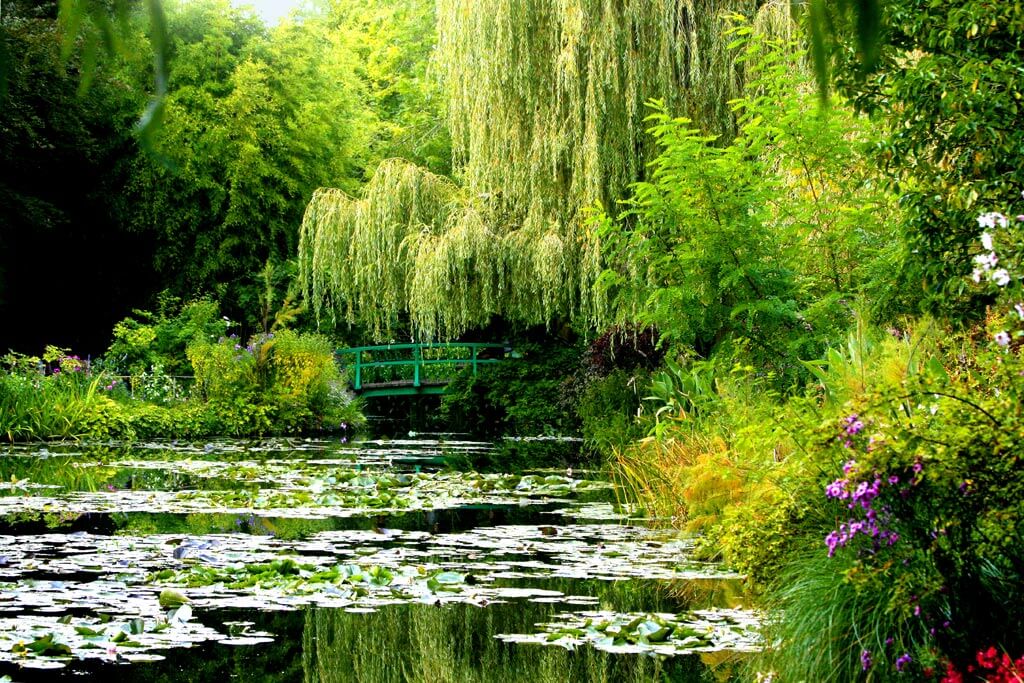
Monet’s Garden in Giverny is another of the top places on our list of what to see in Normandy. Due to its proximity to the French capital, Giverny is also one of Paris’s most popular day trips.
After his success in Paris, Monet had enough money to buy an old construction in the tiny town of Giverny, where he believed he could work better on the light and color. For 40 years and until his death, Monet arranged, rearranged, and enlarged this house and the surrounding gardens, where he died in 1926.
Monet’s gardens are famous for the water lily pond, where Monet painted his world-famous water-lilies series. The house and the attached workshop are also worth the visit, and it is a great opportunity to get a glimpse of Monet’s life and work in Giverny.
Monet’s estate opens its doors with the spring, from 1 April to 1 November 2021. This is one of our favorite places to visit in France in spring, to see the first blossoms, but it is also great to visit under the fall colors. However, June is when the famous water-lilies start to wake up to reach their full blossom in July.
In Giverny, there’s also a small museum dedicated to Impressionism, which is well worth visiting if you have an extra hour in the village.
TIP: This half-day trip to Giverny from Paris is a best seller!
11. Castles of Normandy
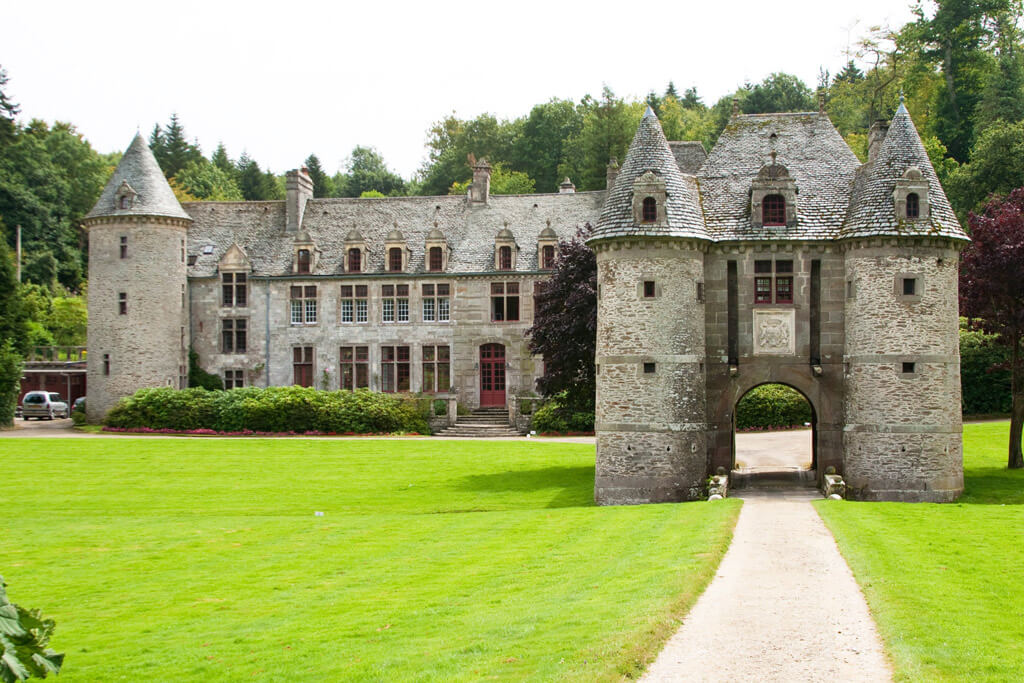
Normandy boasts so many beautiful castles that you could easily justify making a trip to nearly all of them.
During the Hundred Years’ War, many castles were built and fortified in Normandy, ensuring they could serve as strongholds during battles. But there are also beautiful castles built for their owners’ glory that could rival famous castles in France like Versailles or Chantilly.
Our list of best castles in Normandy includes the already mentioned Castle of Caen and Château Gaillard, plus Château of Gisors and Château d’Harcourt (on the picture).
Château d’Harcourt is considered to be one of the best-preserved castles in Normandy. Over the years, enhancements and additions were added, including a curtain wall and nine round towers in the 13th century. Château d’Harcourt is also famous for its arboretum, the oldest arboretum in all of France.
TIP: if you ever dreamed of sleeping in an authentic French château, you will love this list of best château-hotels in Normandy! The fairy-tale Château de Canisy, in the Manche department, and many others make the perfect shelter for a romantic getaway.
Food & Drinks in Normandy
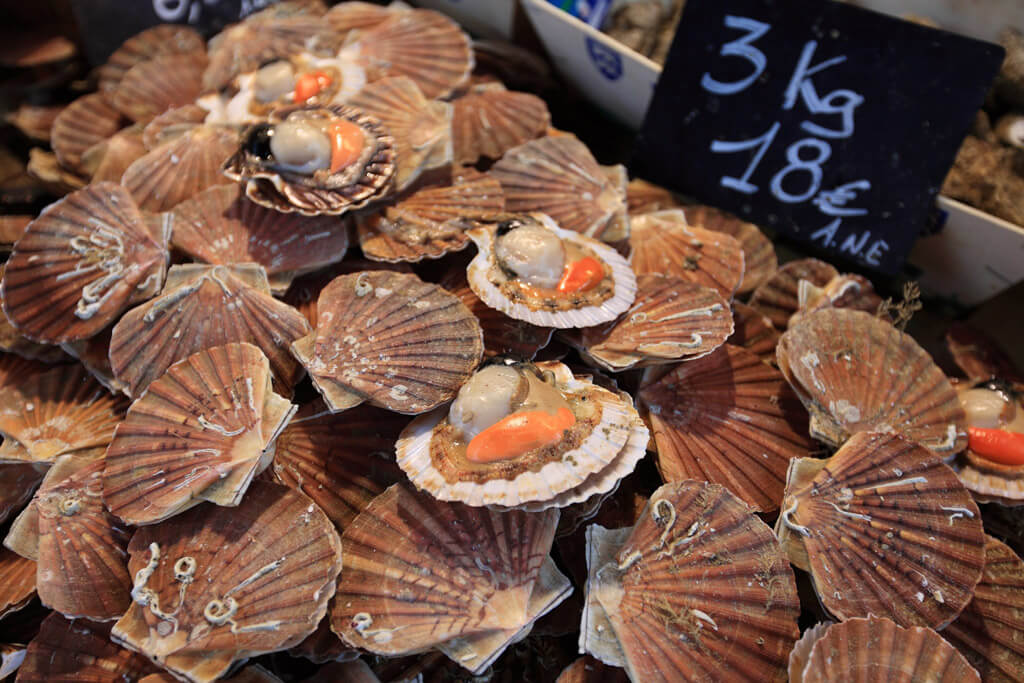
Normandy’s cuisine is determined by its excellent geographical position between fertile lands and the sea. Also, the Norman cows are well known for their milk quality, hence the variety and good quality of the cheese and other milky products.
Normans eat a lot of meat, and if you are around Mont Saint-Michel, you should taste the famous agneau des prés salés. These sheep graze around the Abbey when the tides are low, and the salty taste of this grass gives a unique taste to this tender meat.
Normandy is also the leading producer of oysters, mussels, and scallops in France, so you are in the right place if you like this kind of food!
Apples also play an essential role in Norman cuisine, both in desserts and cider making. The trou normand (Norman hole) is a small glass of calvados, swallowed at once in the middle of the meal, to stimulate the appetite… you should definitely try that!
We cannot finish this chapter on food in Normandy without mentioning the cheese. The list of great Norman cheeses includes famous names like Camembert, Pont-l’évêque, Neufchâtel, or Livarot (all A.O.C), but we invite you to taste and discover other names.
We hope that you enjoyed this list of best things to do in Normandy. If you want to learn about other regions, head to this article about the Regions of France, where we have summarized each region’s highlights.

